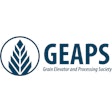
Jess McCluer, vice president, safety and regulatory affairs for the National Grain and Feed Association (NGFA), explored the recent updates from the Occupational Safety and Health Administration (OSHA) and the National Fire Protection Association (NFPA) that affect grain handling facilities and other industries at this year's GEAPS Exchange. He discussed proposed rule changes, enforcement priorities and initiatives aimed at preventing heat-related illnesses in the workplace.
OSHA enforcement priorities and budget increase
OSHA's enforcement priorities have remained consistent, with a focus on ensuring compliance and preventing accidents. The administration has allocated a budget increase for OSHA, allowing for the hiring of new compliance, safety and health officers. This increase in personnel will enhance OSHA's ability to conduct inspections and enforce regulations effectively.
Inspectors have raised concerns about a proposed rule that would allow employee representatives to accompany OSHA inspectors during workplace inspections. This rule aims to promote transparency and ensure employee participation in safety matters. However, there are concerns about the potential for abuse or conflicts of interest. The rule is under review, and its implementation could have significant implications for workplace inspections.
OSHA initiatives for preventing heat-related illnesses
Heat-related illnesses are a significant concern in various industries, including grain handling facilities. OSHA has implemented initiatives to address this issue, including a national emphasis program and a proposed rule on infectious disease standards. The national emphasis program focuses on identifying and mitigating heat-related hazards in the workplace, improving worker safety during hot weather conditions.
The proposed rule on infectious disease standards aims to establish guidelines for preventing the spread of diseases in various industries, including grain handling facilities. This rule is part of OSHA's broader efforts to address workplace health and safety concerns and ensure preparedness for potential disease outbreaks. The details of the proposed rule are still being finalized, and it will undergo further review before implementation.
NFPA combustible dust standards and updates
Combustible dust poses a significant risk in grain handling facilities and other industries. The NFPA and OSHA have been working together to develop comprehensive standards to address this hazard. The NFPA's standards provide guidelines for hazard recognition, prevention and mitigation techniques specific to different industries.
The NFPA is in the process of revising its standards for combustible dust, including NFPA 660 for agricultural dust. The goal is to consolidate and update the standards to ensure consistency and effectiveness in preventing dust-related incidents. These revisions will cover areas such as dust hazard analysis, equipment design and specific requirements for grain handling facilities. It is essential for grain handling facilities to stay updated on these standards and ensure compliance to protect employees and minimize the risk of accidents.
The impact of OSHA and NFPA updates on grain handling facilities
Grain handling facilities must stay informed about the latest OSHA and NFPA updates to maintain regulatory compliance and ensure the safety of their employees. OSHA's enforcement priorities and proposed rule changes could have significant implications for workplace inspections and employee representation during inspections. It is crucial for grain handling facilities to be proactive in their safety practices and review their protocols to align with potential changes in regulations.
The NFPA's updates to combustible dust standards, including the revision of NFPA 660, will provide clearer guidelines for hazard recognition and mitigation. Implementing these standards and conducting comprehensive dust hazard analyses will help grain handling facilities minimize the risk of dust-related incidents. It is important for grain handling facilities to work closely with safety consultants and experts to ensure compliance with these updated standards.
Resources for safety and compliance
To assist grain handling facilities and related industries in their efforts to maintain safety and regulatory compliance, organizations such as the National Grain and Feed Association (NGFA) provide valuable resources. NGFA offers a wide range of materials and tools to help companies develop and implement safety programs, conduct risk assessments, and stay updated on industry regulations and best practices.
NGFA's website provides access to safety tip sheets, videos and other educational resources. These resources cover various topics such as lockout/tagout procedures, heat injury prevention, emergency preparedness and response. Grain handling facilities can use these materials to enhance their safety culture, train employees and implement effective safety measures.
.jpg?auto=format%2Ccompress&crop=faces&fit=crop&h=48&q=70&w=48)
















